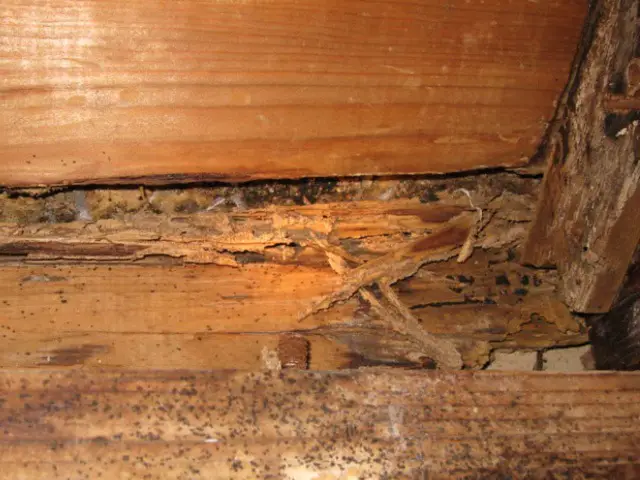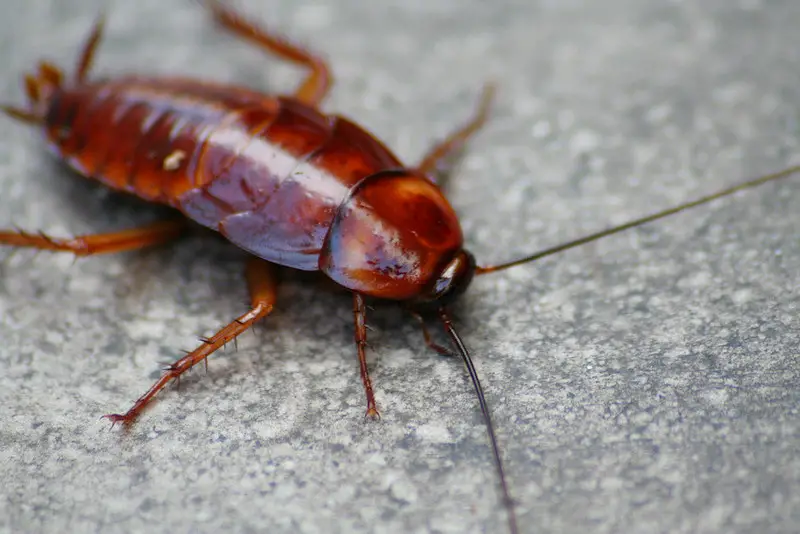Where do bed bugs come from outside?
Bed bugs are introduced to the home by boxes from outside, luggage, furniture, and bedding. Sometimes people buy used or new items that can spread bed bugs from outside. Used mattresses, bed frames, or furniture present the greatest risk of introducing bed bugs and their eggs to your home. Before you bring a bed, mattress, bedding, or furniture into your home, make sure to thoroughly inspect it for bed bugs.
Since bed bugs can survive many months without feeding, they can simply be waiting in what appears to be a clean vacant home. It is also possible for bed bugs to move between connected apartments if they have recently stayed in an area where bed bugs are present. Bats and birds are also known to be the carrier and sources for the spread of bed bugs.
Where do bed bugs come from?
Well, folks, it seems bed bugs are here to stay, and it’s nearly impossible to avoid them. These tiny pests can be found almost anywhere from books to newspapers. So if someone’s home is infested with bed bugs, that person can spread them while going about their everyday activities in public. But are be bugs deadly? No.
There are some ways to avoid these sneaky nocturnal bugs, however. They usually come out during the middle of the night because they’re looking for something to feed off of. The other thing is bed bugs cannot crawl underneath things, so you might find that the bed bug bites you receive will be on parts of your body that are not covered by pajamas, said April Donaldson, Bristolles County Public Pest Control Director.
Donaldson has been seeing more and more cases of bed bug-infested homes recently as her home nurses have reported back to her of having patients whose homes have bed bugs. Donaldson said you shouldn’t be paranoid, just more aware of your environment. She advises you to spray your shoes with rubbing alcohol before entering your home. Wearing pants that drag on the ground can easily pick up bed bugs, so wearing properly fitting pants is key, said Donaldson.
Related posts:
- How To Get Rid Of Bed Bugs in California?
- Can bed bugs bite thru clothing?
- How To Keep Bugs Away From Your House?
- Do Spiders Eat Bed Bugs?
When bed bugs are discovered, it is of the utmost importance to attack and eradicate them ASAP. This pest tends to spread biologically at an alarming speed, usually traveling between apartments by going through the hallways or walls. What usually happens is that the adjacent apartments above, below, to the side and across, become infested, sometimes infecting the whole building or house.
Bed bugs have an innate ability to thoroughly infest homes and can be found in many parts of the home, including:
- Cracks and Crevices of the home or apartment
- Elimination and Control of Pests
- Clothing and mattresses
- Luggage
- Inside picture frames or clocks
- Inside electrical outlets
- Under floors boards
Where did bed bugs come from?
Bed bugs are generally unknowingly transported in furniture, luggage, clothing, or other items carried by people as they travel from place to place. Bed bug infestations are very common in hotels, motels or apartment buildings. In addition, you will find bed bugs in areas with high rates of travel and tourism. The bed bugs are tiny enough to go undetected in personal belongings, and the even smaller bed bug eggs stick to almost anything.
If you wonder one morning upon waking up why you have patterned little red spots on your skin and itching. Most likely, you have been attacked not by ants nor mosquitoes but by the bad bed bugs. First, because they were patterned, second, because they itch when you wake up in the morning. Are you still wondering about bed bugs? Explanations are given below in the following paragraphs of the article.
So how bad are bed bugs? Yes, they are just tiny little insects but with unique and cunning ways of pestering the lives of the most intelligent life form on earth, the humans. It takes the human race to develop a high science of entomology to understand these insects and find ways to eradicate them. Just imagine the size of their bodies which are just the size of a grain of salt; how much tinier could the size of their brains be? If combined collectively, they would be just like powdered talcum in the air. Compare that to the intelligent brains of PhDs, engineers, and technicians tasked to control pests in the cities, hotels, and homes.
Bed bug feeding habits
Bed bugs are normally active right before dawn. The peak feeding period of bed bugs is about one hour before sunrise. Sometimes bed bugs may try to feed at other times, given a chance, and have been observed to feed at any time during the day. They reach their host by crawling or sometimes climbing the walls to the ceiling and drop down on feeling a heatwave. Attracted by warmth and the presence of carbon dioxide, the bed bug pierces the skin of its host (human). With one tube, the bed bug injects its saliva, which contains anesthetics and anticoagulants, while with the other, one withdraws the blood of its host. After feeding only for a few minutes, bed bugs return to their hiding place. Bed bug bites cannot usually be felt until some minutes or hours later; in some cases, bites might cause the skin to swell.
Make sure you read our article: “Can bed bugs bite thru clothing?”
What to do about bed bug bites?
Do any of us know what happens when a bed bug bites? All that we know is the uncomfortable feeling of itchiness that spreads all over our bodies. But, we don’t know that during feeding, these bed bugs use two hollow tubes on their heads to do two different things simultaneously, one: bloodsucking and two: injecting their saliva, which contains anticoagulants and anesthetic into our skin.
As a result that, we might not feel immediate pain or discomfort until sometime later. In addition, this mechanism can even make a person feel numb all over. A successful bloodsucking process can be spotted easily by looking at the bed bug’s translucent body. The body will turn red as a result of our blood filling the space.
We can become more and more sensitive to the bed bug’s saliva if repeatedly exposed to it over time. This would, in turn, mean that if any of us is bitten several times again and again, sometimes, a later allergic reaction might kick in.
The intensity of the allergic reaction varies depending on the person. However, several reported cases indicate that difficulty in breathing might occur. If you know that you are allergic to these nasty pests, you should especially take good care of yourself at home and whenever you are traveling.
Having been bitten by these nocturnal pests, it is sometimes difficult for us to recognize and differentiate between the wounds created by bed bugs and other bloodsucking insects such as mosquitoes and fleas. The bite marks may also appear in many places on our bodies. We can also see that the marks might appear to follow certain patterns due to probable disturbances experienced during feeding.
In most cases, the bites will not only cause a wound but also swells. These wounds are, of course, very itchy, urging you to scratch but try and control yourself from spreading the problem to other areas by going for proper check-up and treatment as soon as possible. You do not want to let them enjoy another night having you as their meal and adding more misery to your life, do you?
As final words, make sure you treat the bites well if bed bugs have bitten you in fear of any infections. If you doubt what’s troubling you all night or are unable to identify the problem yourself, refer to a trained physician for help. For those experiencing bed bug bites for the first time, it can be quite horrific, so be prepared.
How to get rid of bed bugs?
Bed bugs are minuscule but persistent nocturnal insects that can get around from one location to another when they attach themselves to various objects people carry around with them. Regardless of how clean your home is, bed bugs can still find their way inside and thrive on the constant source of food a sleeping human host provides them with night after night. So let’s learn how to get rid of bed bugs without hiring the potentially expensive services of a pest control company.
The first step is to identify the places where you suspect bed bugs might be hiding and break out your vacuum cleaner. You are sure to capture a considerable percentage of the bugs and their eggs with an assiduous cleaning process. When this is done, make sure to kill the bugs in the vacuum bag by bringing its temperature to at least 120 degrees Fahrenheit.
Next, launder all of your bedding articles in hot water to disinfect them from lurking bed bugs. If you suspect an infestation in your wardrobe, include all your clothing articles in the laundry loads as well. Finally, steam-cleaning your mattress is an excellent way to eliminate any bugs that may have nested on it without applying harsh chemicals.
The final step in our guide on how to get rid of bed bugs is to render your bedroom a less welcoming environment for these bugs by identifying and sealing every tiny crack and crevice you can find along your walls. These cracks probably serve as the bed bugs’ hiding places during the day. If you cannot seal all of them, douse them with insecticide, or if you don’t mind mopping your floor later, pour hot water inside them to kill them with the heat.
Now that you know how to get rid of bed bugs, you can take back your bed from these bothersome insects. Just be steadfast and attentive in your efforts, and soon your bed will be safe and bug-free once more.
How long does it take for a bed bug infestation to manifest?
A bedbug infestation may produce symptoms such as skin rashes, allergic reactions, and psychological effects. Cimicosis, another term for bedbug bites, may be found throughout the body’s surface. Some produce little to no effect on the skin, while others form prominent red blisters. A proper diagnosis includes both locating the bedbugs and showing comparable symptoms of infection. As a treatment, the bedbugs must be terminated but is otherwise symptomatic. From the 1980′s to the 1990′s, infestations have augmented at an increasing rate within developed countries. Some speculate that this resurgence was due to increased foreign travel, the bedbug’s adaptive resistance to pesticides, and the fact that more people have been buying and selling used furniture – a primary nesting ground for these insects.
A household may become infested with bedbugs in a number of ways. Along with their eggs, these parasites may attach themselves to pets, which in turn bring them into the house. They may also cling onto clothing or hide inside suitcases, creating an extremely convenient transportation system. Wild animals, particularly birds, may also carry these parasites as they fly from location to location. One may locate a single bedbug on their own; however, they often congregate together once established. They will typically inhabit beds or couches to stay close to their hosts but may also be found in vehicles or buried within bedside clutter.
Bedbugs are typically nocturnal and highly elusive, making them very difficult to spot. They may hide in small, dark crevices, and their eggs may be found within the mattress or fabric seams. In addition to the rash-like bites on the skin, other signs of bedbugs may be evident from blood smears, fecal spots, or molts found on the bedsheets. Detection devices use heat and/or carbon dioxide in order to attract and lure them out. Detection dogs, when properly trained, can pinpoint the location of a bedbug infestation within 97.5% accuracy. As of 2021, it’s estimated that many dogs – especially, Beagles, Labradors, German Shepherds, and Bloodhounds – are trained and used to find bedbugs.




